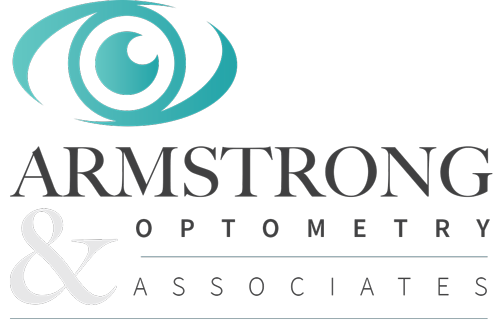Services
Comprehensive Eye Exam
Annual regular eye exams are a key part of maintaining your visual health. Our Greenwood, Indiana office is equipped with the latest technologies that enable us to provide comprehensive, non-invasive eye exams.
When You Arrive
An eye exam takes about 30 minutes. If it’s your first time at our office, please arrive approximately 15 minutes before your appointment so we can take care of some paperwork and get your medical/vision insurance on file.
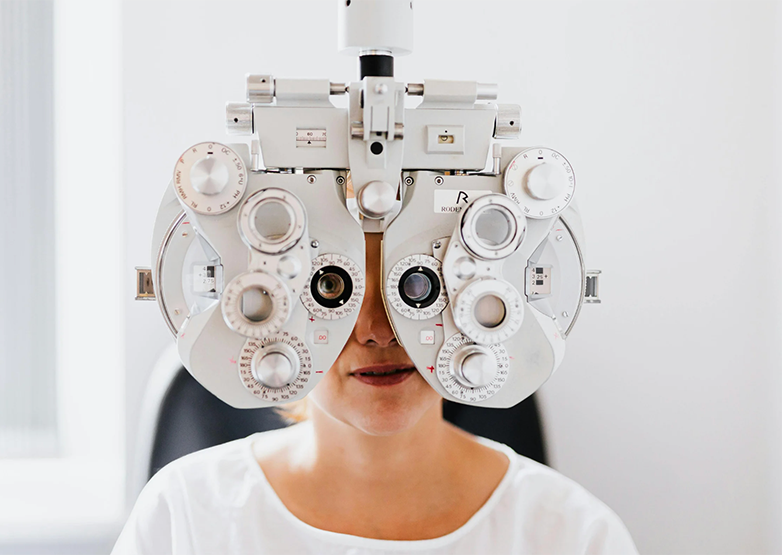
Initial Test
Before you meet with an optometrist, an optometric technician will take a few images of your eye using our digital retinal camera and OCT equipment. We will also perform a few other tests that will approximate your corrective lens prescription and determine your visual field.
Includes
- Corneal topography, where a detailed map of the curvature of your cornea is taken
- Ocular coherence tomography, which takes an image of your retina and optic nerve
- Retinal photography, which clearly indicates the presence of vision-changing illnesses or developments
- Optometrist testing and consultation
Optometrist Exam
Once you’ve completed your preliminary testing, you will then be joined by your optometrist, who will perform a few more intricate tests and discuss their findings with you.
Includes
- Slit lamp exam, which looks at the cornea and inner eye. Floaters and other visual indicators of health are assessed by the doctor during this test.
- Tonometry, which measures eye pressure
- A visual acuity test, which measures the quality of your vision
Follow Up
If necessary, we will book a follow-up appointment. This may be to fit your eyes for contact lenses (if you’re interested in wearing contacts) or perform additional tests.
If needed, your options for vision correction may include:
Children's Eyecare
We know that kids can be tricky with any doctors, so we have built an environment at our Greenwood office where children can feel safe and secure. This not only helps kids enjoy their annual eye exams more, but also engages them on an intellectual level – we have highly sophisticated equipment which kids love to learn about.
When Your Arrive
You should try to arrive around 15 minutes before the scheduled appointment time – this lets us handle any paperwork, and we may be able to start the exam a few minutes early.
Even the most engaged children let their attention wander before long – it’s in their nature. That’s why we have optimized our children’s eye exam to be conducted in just 20-30 minutes, without compromising on the first-rate eye care for which we are known.
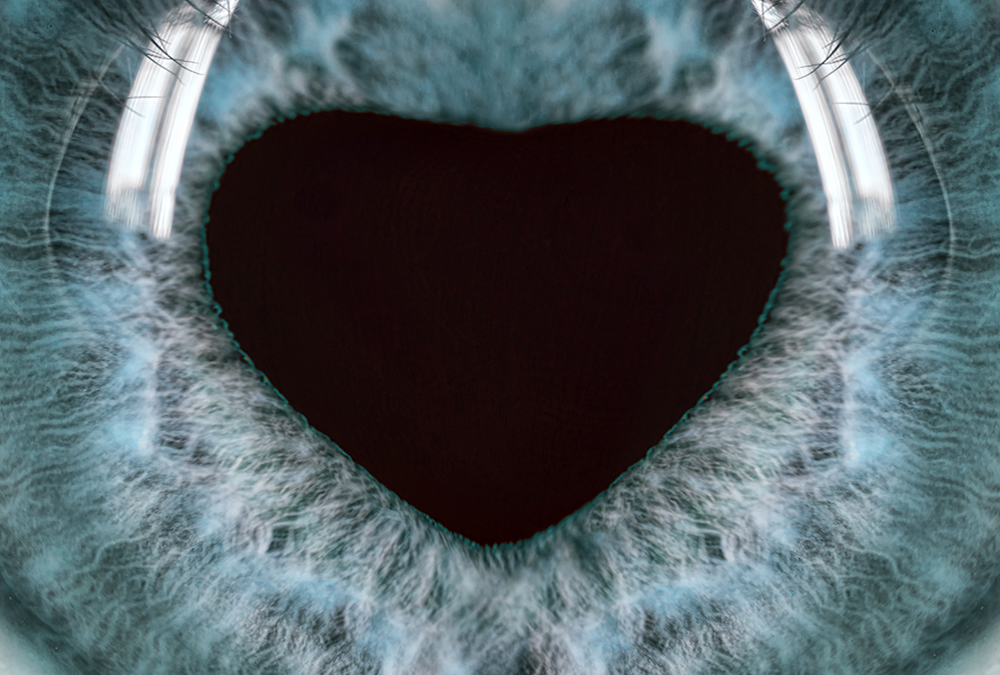
Technology Focus
There’s no one-size-fits-all approach to children’s eye exams, so we always perform tests that are specific to your child’s needs. The foundation of all testing is our technology: we invest in cutting-edge equipment to offer your children superior eye care and the best chance of growing up with quality vision.
Gentle Experience
Testing
- Slit lamp exam, which looks at the cornea and inner eye. Floaters and other visual indicators of health are assessed by the doctor during this test.
- Diopsys, which measures the nerve function between the eye and the brain.
- Tonometry, which measures eye pressure.
- A visual acuity test, which measures the quality of your vision.
- Binocular vision testing.
- Eye teaming and muscular testing.
This visual acuity test can be conducted in different ways; for example, we will rely heavily on visual cues from a toddler, whereas a six year old can probably articulate their difficulties to some degree.
Contact Lens Fitting
Only once we have measured the shape and size of your eye, conducted a comprehensive examination of your overall eye health and discussed your lifestyle, habits and work, can we recommend lenses.
The idea is that they fit not only your eye, but also that they seamlessly integrate into your day-to-day life. Of course, we will also re-evaluate your prescription at every exam.
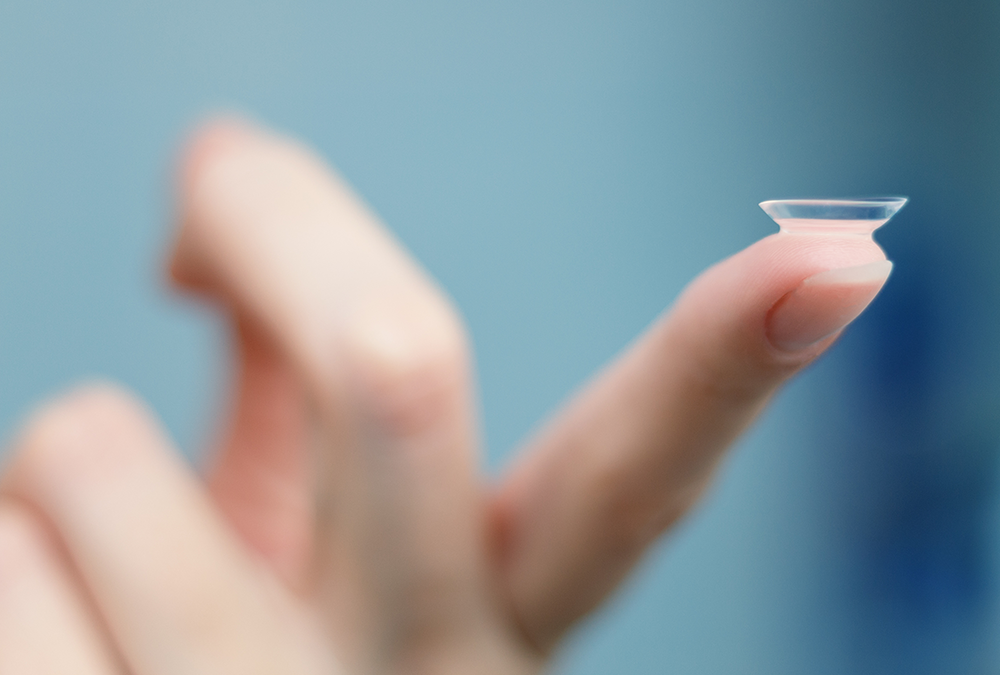
Not all contact lenses are created equal.
Depending on the outcome of your assessment, your optometrist may discuss the need for a speciality lens. These types of lenses are specialized to meet specific needs and include:
These are larger-than-average lenses which are more stable on the eye, and are often prescribed to those for whom regular lenses are not an option.
Designed specifically to correct astigmatism due to an irregular curvature of the cornea. They have no “normal” shape and are made to suit each pair of eyes.
Multifocal lenses are, as the name suggests, lenses which offer multiple prescription within a single lens: one for short distance, one for long distance. These are very useful in helping those with presbyopia when their reading vision degrades with aging.
These are often described as the most comfortable contact lenses. They transmit oxygen through to the eye, rather than being lubricated by water. These are custom-made to fit snugly onto your cornea.
Our Approach
Our standard fitting exam comes in three parts.
Eye Health
As with any eye exam, we use a range of technologies to fully understand your eye health. These technologies include Visual Field Screening (to measure the quality of your peripheral vision and consequently the existence of diseases like glaucoma) and Optomap Retinal Imaging to get a detailed look at your retina.
Visual Acuity
Eye Measurement
The exact shape of the cornea can vary from person to person, and by obtaining accurate dimensions for each eye, we can provide tailored lenses for improved comfort and vision.
Contact Lens Brands










Specialty Eyecare
One of the most prolific eye conditions afflicting Americans today, cataracts are also the easiest to resolve.
LEARN MORERed eye can be contagious, so it’s important to establish whether or not your presence poses a risk to others.
LEARN MOREThere are a variety of different techniques which may be employed to help verify the existence – and severity – of diabetic retinopathy, the main eye disease unique to diabetics.
LEARN MOREIf left unexamined, the root cause will go unidentified and serious effects (such as blindness due to retinal detachment) could occur.
LEARN MOREThe disease starts by subtly targeting your peripheral vision, and many sufferers do not notice their limited eyesight until they are virtually tunnel blind.
LEARN MORELASIK is the world’s first choice when it comes to laser corrective surgery, with tens of thousands of operations performed every year in the States. Not only that, but the success rate is over 95 percent – the vast majority of patients are very pleased with the results.
LEARN MOREMacular degeneration (or AMD) is a potentially vision-stealing disease for which there are no known cures and very limited treatment options.
LEARN MORE